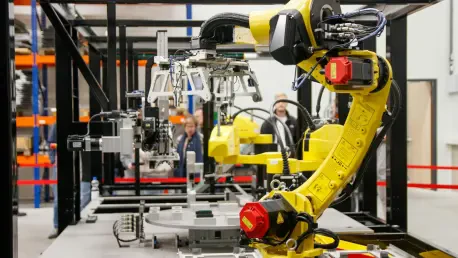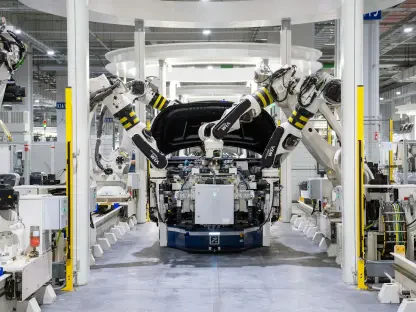Introduction
In today’s fast-evolving industrial landscape, manufacturers face unprecedented pressure to adapt to volatile market demands, supply chain disruptions, and stringent sustainability mandates, all while maintaining profitability and a competitive edge. Discrete manufacturers, in particular, grapple with the challenge of producing diverse products in smaller batches without sacrificing efficiency or quality. Smart manufacturing emerges as a transformative force, integrating advanced technologies like artificial intelligence (AI), the Internet of Things (IoT), and digital twins to redefine factory operations. This approach not only addresses immediate operational hurdles but also positions companies for long-term resilience in a technology-driven world.
This editorial delves into the profound impact of smart manufacturing on the future of factories, focusing on its strategic importance for B2B decision-makers. It explores how digital transformation enhances agility, drives efficiency, and fosters innovation, while also tackling the persistent challenges of implementation. By examining key trends, tangible outcomes, and actionable insights, the discussion aims to equip industry leaders with the knowledge needed to navigate this paradigm shift. Understanding these dynamics is critical for staying ahead in an era where digital adoption often separates market leaders from laggards.
Unlocking Potential Through Digital Transformation
Smart manufacturing represents a holistic framework that leverages cutting-edge tools to optimize industrial processes, delivering measurable business outcomes. Technologies such as AI, Industrial IoT (IIoT), and cloud computing enable real-time data analytics, predictive maintenance, and seamless machine-to-machine communication. For instance, a recent survey indicated that 92% of manufacturers view smart manufacturing as the primary driver of competitiveness over the next three years, with production output increases of 10-20% already reported by early adopters. This shift directly translates into enhanced operational agility and reduced downtime.
Beyond immediate gains, digital transformation fosters a performance gap between industry leaders and those slower to adapt. The ability to customize products rapidly, streamline supply chains, and allocate resources dynamically offers a distinct edge in meeting fluctuating customer expectations. Tools like digital twins, which create virtual replicas of physical systems, allow for risk-free testing and optimization, slashing development timelines and costs. Such capabilities underscore why 78% of manufacturers allocate over 20% of their improvement budgets to these initiatives, signaling a strategic commitment to digital maturity.
Yet, the journey is not without obstacles that demand strategic foresight. Integrating legacy systems with modern technologies often poses significant technical and financial hurdles, while workforce readiness remains a critical concern for 35% of executives. Addressing these barriers through targeted training and robust cybersecurity measures—evidenced by 68% of companies conducting recent risk assessments—becomes essential to unlocking the full potential of smart manufacturing and ensuring sustainable growth.
Conclusion
Looking back, the exploration of smart manufacturing revealed a landscape where digital tools redefined factory efficiency, agility, and innovation through the strategic integration of AI, IoT, and digital twins. The path forward for B2B leaders lies in balancing technological investments with human-centric strategies, ensuring workforce adaptation and robust security frameworks. Embracing this dual focus will be pivotal in navigating future complexities and sustaining a competitive advantage in an increasingly digital industrial era.









